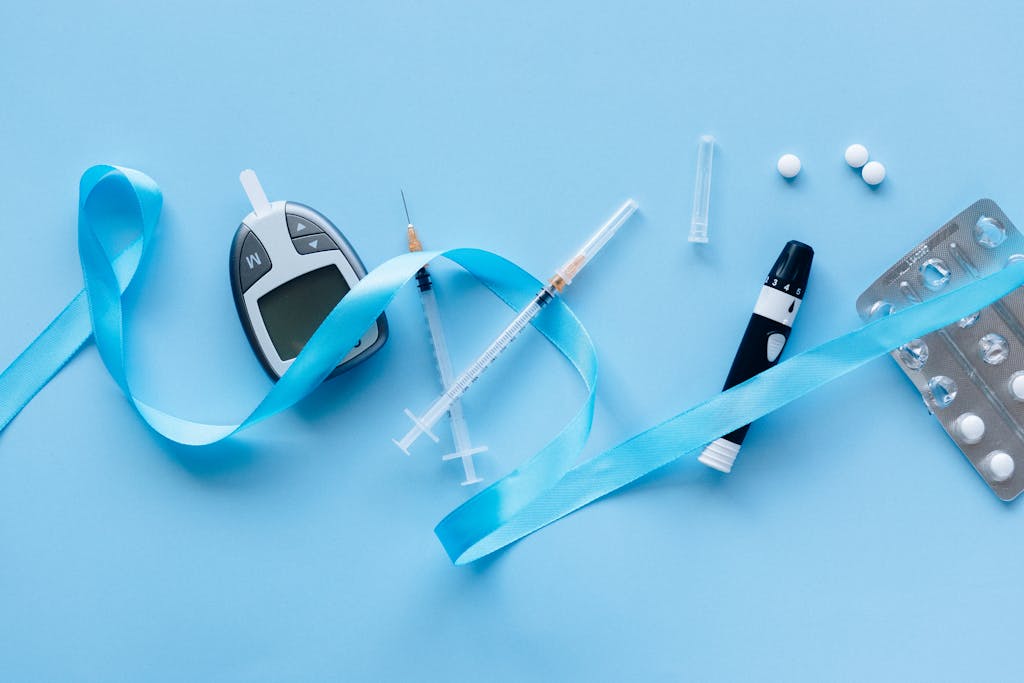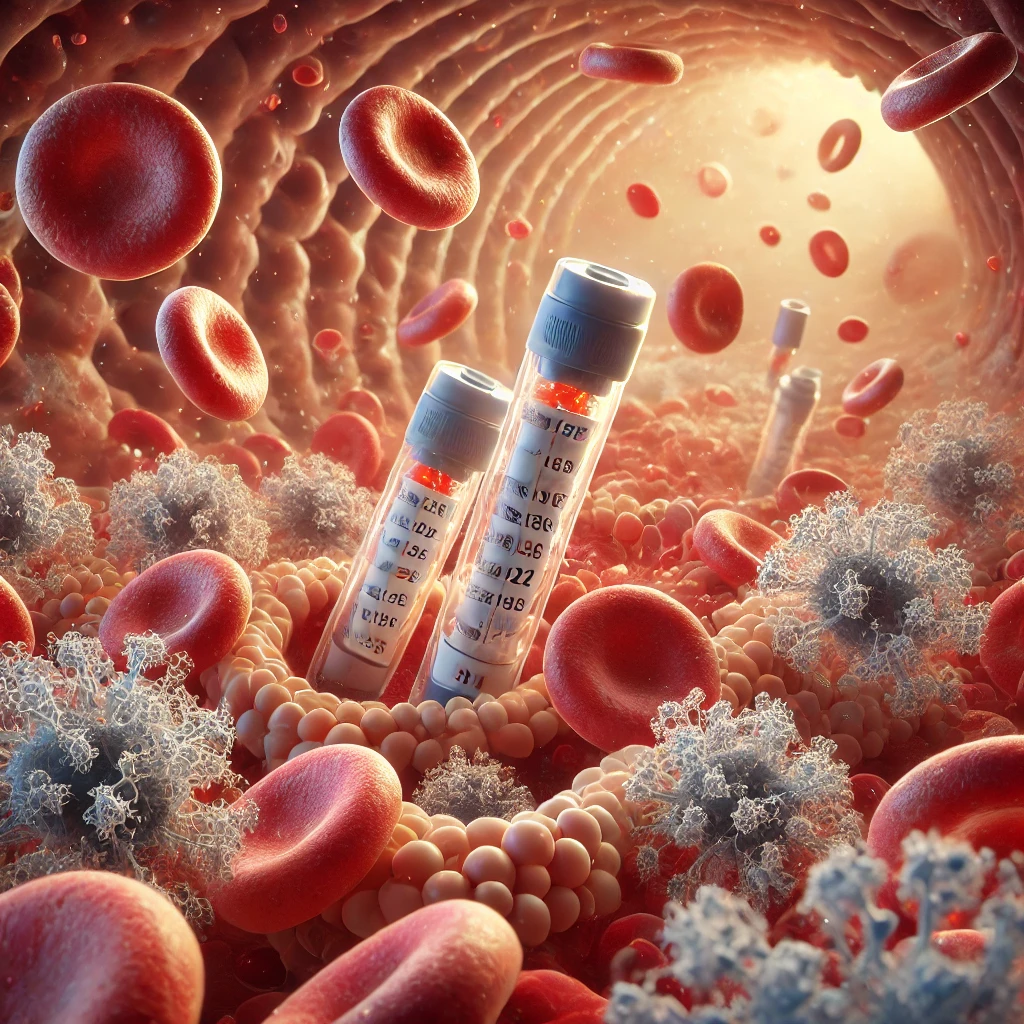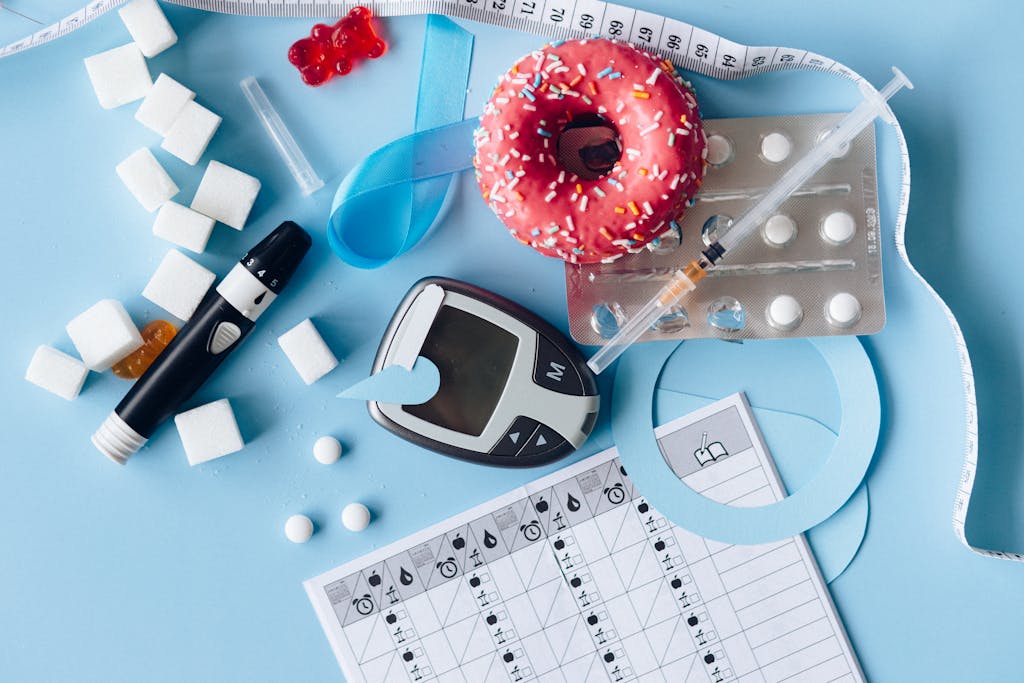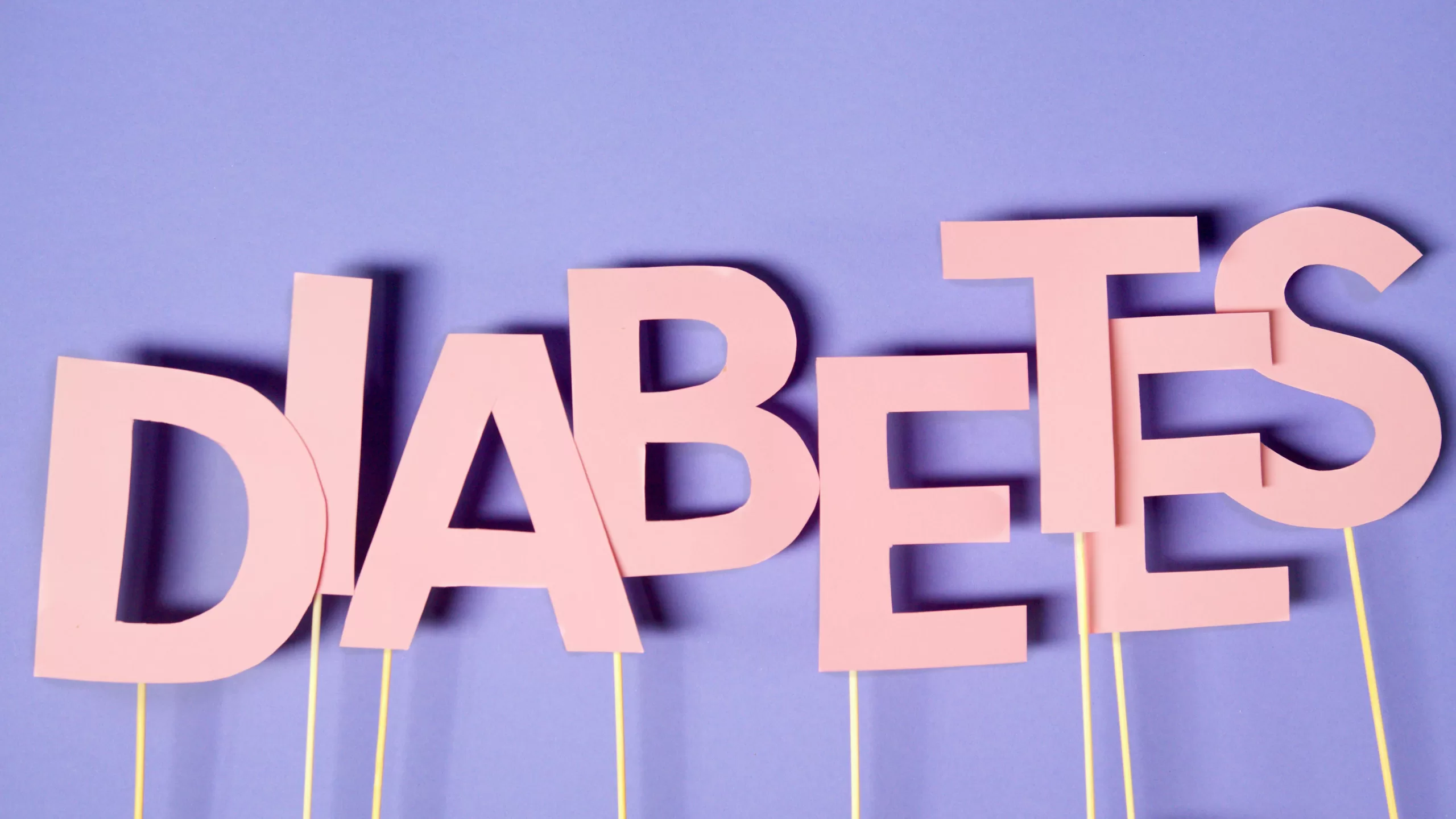The Complete Guide to Understanding the Causes of Diabetes
Type 2 diabetes is a chronic health condition on a war path. Every day, approximately 5,082 people in the United States alone are diagnosed with diabetes1. Within the same 24-hour period, an estimated 238 diabetes-related amputations occur. Additionally, an average of 120 individuals develop end-stage kidney disease as a result of diabetes, and 48 people lose their vision due to diabetic retinopathy.
Diabetes is an unwelcome player dominating a game no one wants to play. But what exactly causes diabetes? How does it begin, and more importantly, how can we ensure victory against this relentless health condition? Understanding its origins and strategies for prevention is key to taking control and reclaiming health.
Diabetes Statistics
- 38.4 million people have diabetes
- 97.6 million people aged 18 years or older have prediabetes (38.0% of the adult U.S. population)2
- The leading cause of death globally is heart disease – a common complication of diabetes3
- Adults with diabetes face heart disease death rates that are 2 to 4 times higher than those without diabetes
- The risk for stroke is 2 to 4 times higher among people with diabetes
- Diabetic retinopathy accounts for 12,000 to 24,000 new cases of blindness annually
- Between 10%-40% of diabetics will develop chronic kidney disease, potentially leading to kidney failure4
- People with diabetes have a significantly higher risk of kidney failure, with approximately 50% of new cases directly linked to diabetes.
- More than 60% of individuals dependent on dialysis for chronic kidney failure are diabetic5
- Approximately 65% of individuals with diabetes experience varying degrees of nervous system damage including impaired sensation or pain in the hands and feet, delayed digestion, carpal tunnel syndrome, and other nerve-related issues.
- People aged 60 and over are 2-3 times more likely to lose their independence than those without diabetes.
- Diabetics are twice as likely to experience depression compared to those without.
- People with diabetes are at a much greater risk of experiencing pregnancy complications, dental disease, death from respiratory conditions, and biochemical imbalances.
- Over 6.7 million people die from diabetes each year.

What is Diabetes?
Diabetes is a condition characterized by insulin resistance6, where the body either does not produce enough insulin or cannot use it effectively. This condition impacts every organ, tissue, and cell in the body, from the toes to the brain. As diabetes advances, it poses a threat to all bodily systems, leaving no part of the body unaffected.
What is Insulin?
In order to understand diabetes, you must first understand insulin and its role in the body. When you consume carbohydrates, they are broken down into glucose (sugar), which is absorbed by the intestines and enters the bloodstream, becoming blood glucose. The rise in blood glucose signals the pancreas to release a hormone called insulin. Insulin is then released into the bloodstream where it binds to insulin receptors in the body cells, allowing glucose to enter the cell. In a healthy body, without insulin resistance, this process allows the blood glucose levels to return to normal.
However, in the presence of insulin resistance, there is not enough insulin to bind to the copious amounts of glucose in the bloodstream. Body cells reach their maximum capacity for glucose storage, preventing further absorption. As a result, excess glucose remains in the bloodstream, leading to chronically elevated blood glucose levels. In response, the pancreas produces more insulin to address the excess glucose. However, due to the resistance, insulin can no longer bind effectively to cell receptors, leaving glucose unutilized and further exacerbating the problem. This cycle of excess glucose and increased insulin production results in insulin resistance.

What Causes Type 2 Diabetes?
The short answer is low insulin sensitivity or insulin resistance.
Insulin sensitivity refers to how well your body responds to insulin. High sensitivity indicates that your body efficiently uses insulin to regulate blood sugar levels, producing only the amount needed7. In contrast, low sensitivity, or insulin resistance, means your body has difficulty utilizing insulin properly, requiring higher levels to maintain normal blood sugar. Prolonged insulin resistance will eventually lead to type 2 diabetes (T2DM)8 and other metabolic disorders.
The body can develop resistance to any substance — pain medications, antibiotics, drugs, alcohol etc. Prolonged or excessive use of a substance causes the body to require increasingly higher doses to achieve the same effect due to the development of tolerance. Insulin is no exception to this process.
When insulin levels remain chronically high, the body gradually becomes resistant to its effects. As a result, the pancreas is forced to produce more insulin to manage blood glucose levels. Over time, the body’s ability to produce and use insulin effectively diminishes. This leads to persistently high blood glucose levels, ultimately resulting in the development of type 2 diabetes. At this stage, managing glucose often requires insulin injections or other medications to compensate for the body’s impaired insulin regulation.

What Causes Insulin Resistance?
Chronically elevated blood glucose levels eventually lead to insulin resistance. These elevated levels are caused by consuming more carbohydrates than your body can handle based on your personal physiology. Carbohydrate tolerance varies among individuals; for example, highly active individuals or those who exercise regularly and have higher muscle mass will use carbs more effectively than sedentary individuals.
All carbohydrates raise blood glucose levels, but simple carbs found in processed foods, fruit juices, honey, and many grains cause the most dramatic spikes9. If you choose to include carbs in your diet, opt for whole foods like lower-carb fruits and vegetables, which have slightly milder effect on blood sugar levels.
Gluconeogenesis
It’s worth noting that there is no such thing as an essential carbohydrate. While the body requires glucose as an essential fuel source, carbohydrates themselves are not essential. The body is capable of producing glucose through a process called gluconeogenesis10. During gluconeogenesis, protein and the glycerol component of fats are converted into glucose11, ensuring the body has the energy it needs. This is why protein and fat are classified as essential nutrients, while carbohydrates are not.
When the body relies on gluconeogenesis to meet its glucose needs—rather than a constant influx of dietary carbohydrates—it naturally regulates glucose production, creating only what is necessary. This self-regulating process maintains stable blood glucose levels, effectively eliminating the risk of insulin resistance and type 2 diabetes.

Diabetes
Diabetes is not the type of condition that you can passively hope to avoid. Neglecting intentional healthy lifestyle and dietary choices significantly increases the risk of a diagnosis with grave consequences. To put the prevalence of this condition into perspective, during the time it took to read this article, three people in the United States alone were newly diagnosed with type 2 diabetes. Globally, approximately 462 million individuals currently live with type 2 diabetes, a number that continues to rise at an alarming rate. If this trend persists, projections indicate that by 2050, 1.3 billion people worldwide could be living with this condition.
The good news is that diabetes is not inevitable. By adopting healthy dietary and lifestyle habits, you can significantly reduce your risk of developing it—nearly to zero. If you already have type 2 diabetes, there is hope. This condition is entirely reversible through dedicated dietary and lifestyle changes. A diagnosis does not mean a lifetime sentence. With consistent effort and determination, you can overcome type 2 diabetes and its associated complications, paving the way for a future free from the burdens of this condition.
*Important note
If you have type 2 diabetes and are beginning to reduce or eliminate carbohydrates from your diet, it’s crucial to monitor your blood glucose and insulin levels closely. Adjusting your carb intake will likely alter your insulin requirements, and you must avoid taking too much insulin. Work with your healthcare provider as you make these changes to safely manage the process of reversing your condition. If your current doctor is not supportive of your commitment to transforming your health, consider finding a preventative medicine physician who will guide and encourage you on your journey to putting type 2 diabetes into remission for good.
Supporting Research
- About diabetes. Congressional Diabetes Caucus. (2023, August 21). https://diabetescaucus-degette.house.gov/facts-and-figures#:~:text=Each%20day%20approximately%205%2C082%20people,48%20people%20who%20go%20blind. ↩︎
- Centers for Disease Control and Prevention. (2024, May 15). National Diabetes Statistics Report. Centers for Disease Control and Prevention. https://www.cdc.gov/diabetes/php/data-research/index.html#:~:text=Fast%20Facts%20on%20Diabetes%20*%20Total:%2038.4,(22.8%%20of%20adults%20with%20diabetes%20are%20undiagnosed) ↩︎
- World Health Organization. (2024, August 7). The top 10 causes of death. World Health Organization. https://www.who.int/news-room/fact-sheets/detail/the-top-10-causes-of-death#:~:text=The%20top%20global%20causes%20of,leading%20causes%20of%20death%20globally. ↩︎
- Centers for Disease Control and Prevention. (2024a, May 15). Chronic kidney disease. Centers for Disease Control and Prevention. https://www.cdc.gov/diabetes/diabetes-complications/diabetes-and-chronic-kidney-disease.html#:~:text=Approximately%201%20in%203%20adults,diabetes%20can%20cause%20kidney%20disease. ↩︎
- Klara R. Klein, Ildiko Lingvay, Katherine R. Tuttle, Jennifer E. Flythe; Glycemic Management and Individualized Diabetes Care in Dialysis-Dependent Kidney Failure. Diabetes Care 2024; dci240081. https://doi.org/10.2337/dci24-0081 ↩︎
- Cefalu WT. Insulin resistance: cellular and clinical concepts. Exp Biol Med (Maywood). 2001 Jan;226(1):13-26. doi: 10.1177/153537020122600103. PMID: 11368233. ↩︎
- Human Health Co. (2025, January 15). The powerful link between Muscle Mass and a healthy life. Humanhealthco.com. https://humanhealthco.com/the-powerful-link-between-muscle-mass-and-a-healthy-life/ ↩︎
- Lee SH, Park SY, Choi CS. Insulin Resistance: From Mechanisms to Therapeutic Strategies. Diabetes Metab J. 2022 Jan;46(1):15-37. doi: 10.4093/dmj.2021.0280. Epub 2021 Dec 30. PMID: 34965646; PMCID: PMC8831809. ↩︎
- Increased consumption of refined carbohydrates and the epidemic of type 2 diabetes in the United States: an ecologic assessment Gross, Lee S et al. The American Journal of Clinical Nutrition, Volume 79, Issue 5, 774 – 779 ↩︎
- Pirinen , E., & Auwerx , J. (2012). Gluconeogenesis. Gluconeogenesis – an overview | ScienceDirect Topics. https://www.sciencedirect.com/topics/medicine-and-dentistry/gluconeogenesis#:~:text=Gluconeogenesis%20is%20a%20metabolic%20pathway,glycerol%20and%20glucogenic%20amino%20acids. ↩︎
- Kaleta C, de Figueiredo LF, Werner S, Guthke R, Ristow M, Schuster S. In silico evidence for gluconeogenesis from fatty acids in humans. PLoS Comput Biol. 2011 Jul;7(7):e1002116. doi: 10.1371/journal.pcbi.1002116. Epub 2011 Jul 21. PMID: 21814506; PMCID: PMC3140964. ↩︎







